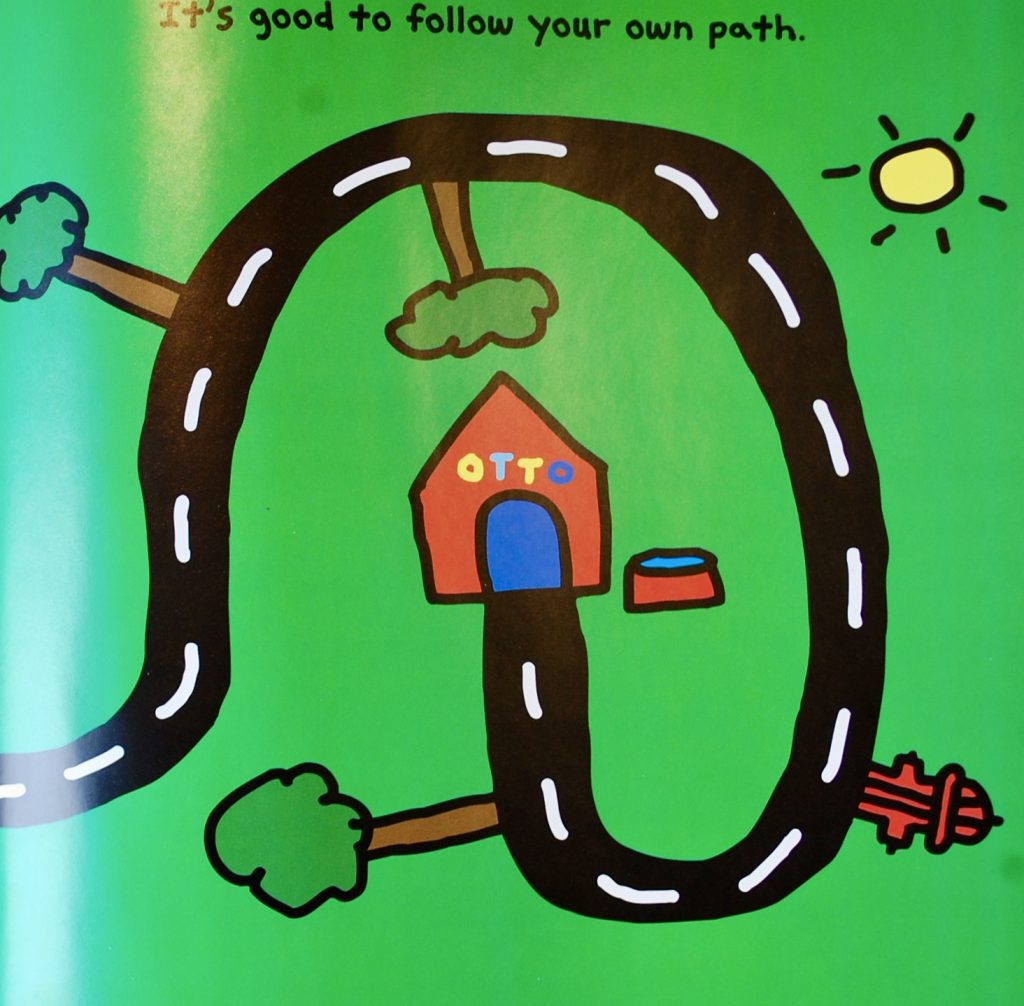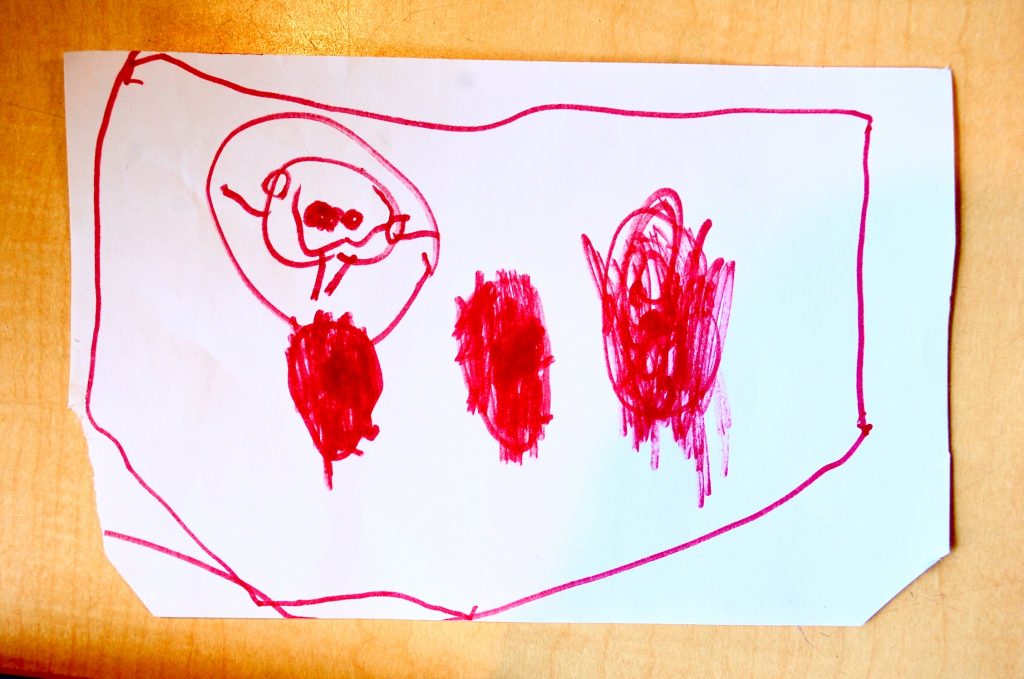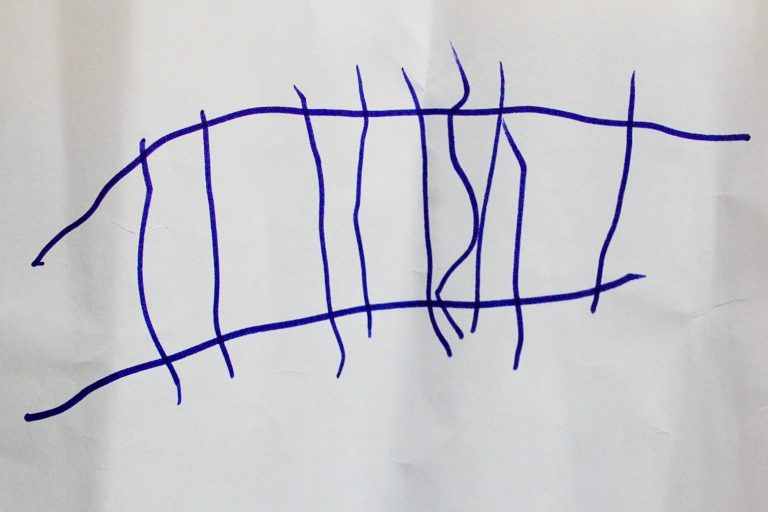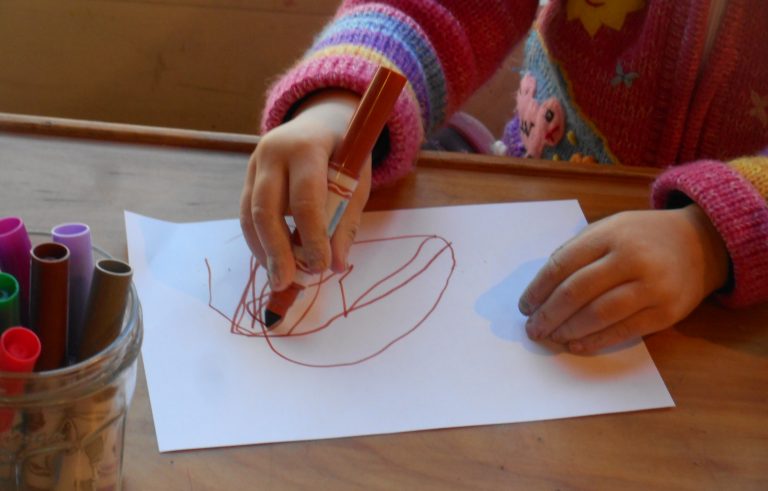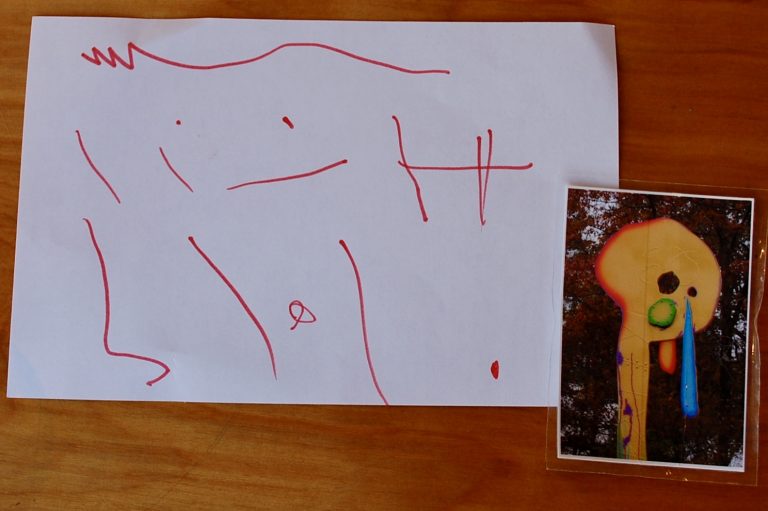In 2015, “Drawing Undefined” was the focus of a deCordova exhibition. In stretching the concept of drawing to its limits, some artists used drawing “as its own means…following wherever it will lead them, in whatever form it might take.”
How reminiscent of the approach of Studio Blue children.
Ruthie and Ian draw together at the mirror easels and markers. Ian finishes his drawing and says, I’m going to show this to my mom. Ruthie says I’m making shapes. I do it like that. I just color it in. A rectangle. Here are the completed drawings.
Amelia wants to draw a house and asks Mark to draw one for her. Mark suggests that they find a picture in a book and brings over It’s Okay to Make Mistakes, which has a picture of a dog house. Meanwhile, Kyla says she’s drawing a house (with a bunny), explaining that it is a rectangle. Mark holds up a rectangular piece of paper, moving his finger around the edge: it has a line up, across, down, and across. Mark draws the first line: up. Then he suggests that Amelia complete the house, and she does. She cuts around the edge and draws inside the house. Later, she presents it to Diane: This is a house in a house. And the people are gone out the door. And the bunny’s right there. Kyla, meanwhile, sets up a block and puts some drawings on top, and Amelia adds hers on top. Finally, Kyla adds a cloth and a block. All done!
Ian slides the wooden ring across many surfaces, its ribbon trailing behind Eventually he lands upon the wooden posts. He weaves in and out, in and out, drawing a pattern with the ribbon.
A gradual shift has been taking place in the children’s approach to drawing. Having experienced how drawing may transform a material, drawing now begins to be transformative to the child herself. Sometimes we still need to scribble, to feel the pencil rub against the paper and enjoy the power of changing the color of the surface. But we have also begun to take pride in the skill involved in representation, and drawing is revealed as an increasingly significant vehicle for social/emotional development.

